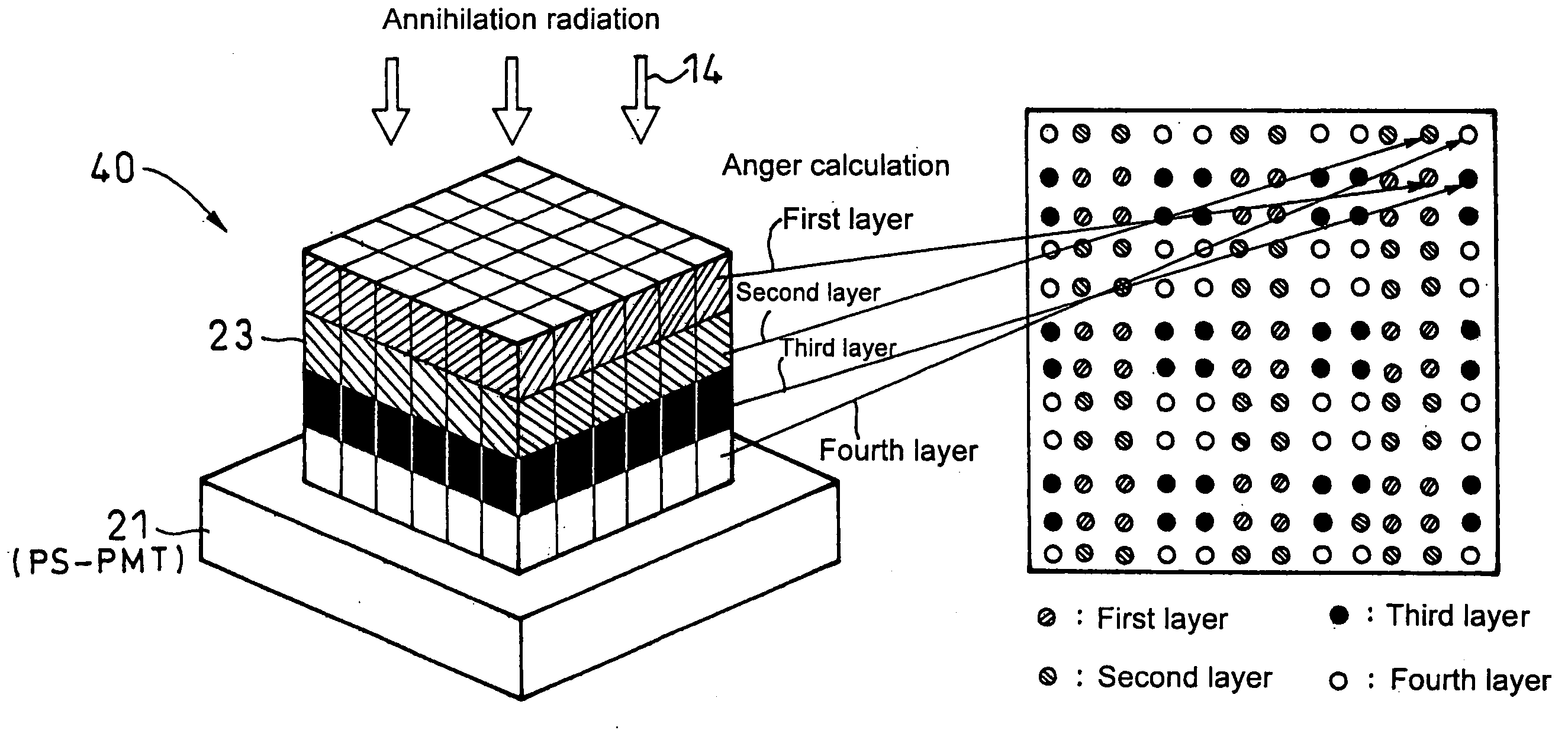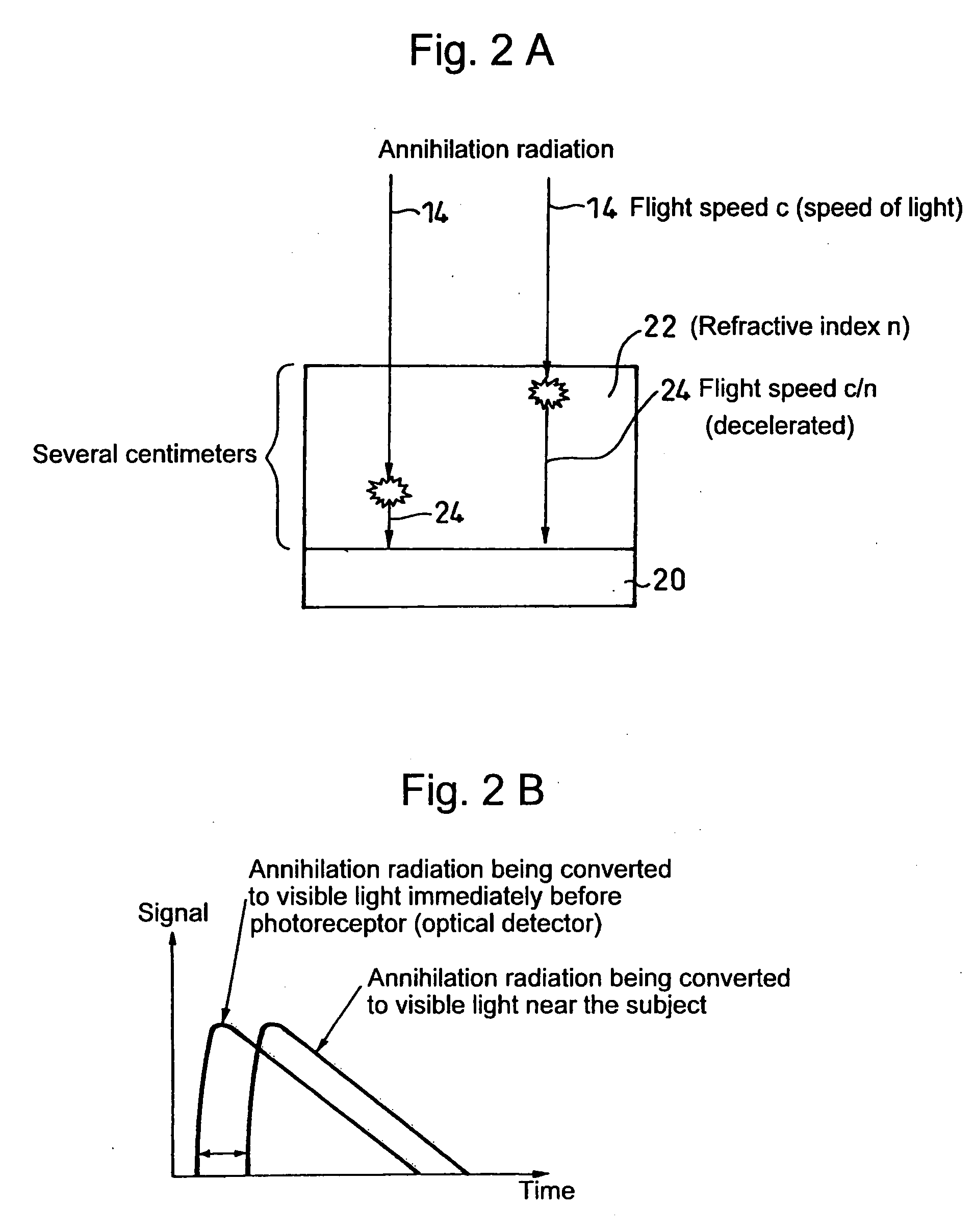Positron emission tomography scanner and radiation detector
a tomography scanner and positron emission technology, applied in the field of positron emission tomography scanners and radiation detectors, can solve the problems of different output waveforms, different propagation path lengths, and radiation detection time presented errors, so as to reduce radiation detection time error, improve temporal resolution, and improve accuracy
- Summary
- Abstract
- Description
- Claims
- Application Information
AI Technical Summary
Benefits of technology
Problems solved by technology
Method used
Image
Examples
Embodiment Construction
[0047]Embodiments of the present invention will now be described in more detail with reference to the drawings.
[0048]First, with reference to FIG. 7, described by way of example is a method for preparing data to be held to make a correction to errors in detection time. These errors in detection time include those caused by the difference in propagation speed between an annihilation radiation and scintillation light; the difference in propagation path length of scintillation light; and the difference in output waveform of an optical detector resulting from the difference in propagation path of scintillation light.
[0049]In FIG. 8, reference numeral 30 denotes a radiation source which employs a positron emitter like 22Na. Also reference numeral 32 denotes a radiation detector for measuring one of a pair of annihilation radiations of 511 keV to create a signal serving as a time reference. The radiation detector 32 includes a high-speed optical detector such as Type H3378 photomultiplier...
PUM
 Login to View More
Login to View More Abstract
Description
Claims
Application Information
 Login to View More
Login to View More - R&D
- Intellectual Property
- Life Sciences
- Materials
- Tech Scout
- Unparalleled Data Quality
- Higher Quality Content
- 60% Fewer Hallucinations
Browse by: Latest US Patents, China's latest patents, Technical Efficacy Thesaurus, Application Domain, Technology Topic, Popular Technical Reports.
© 2025 PatSnap. All rights reserved.Legal|Privacy policy|Modern Slavery Act Transparency Statement|Sitemap|About US| Contact US: help@patsnap.com



